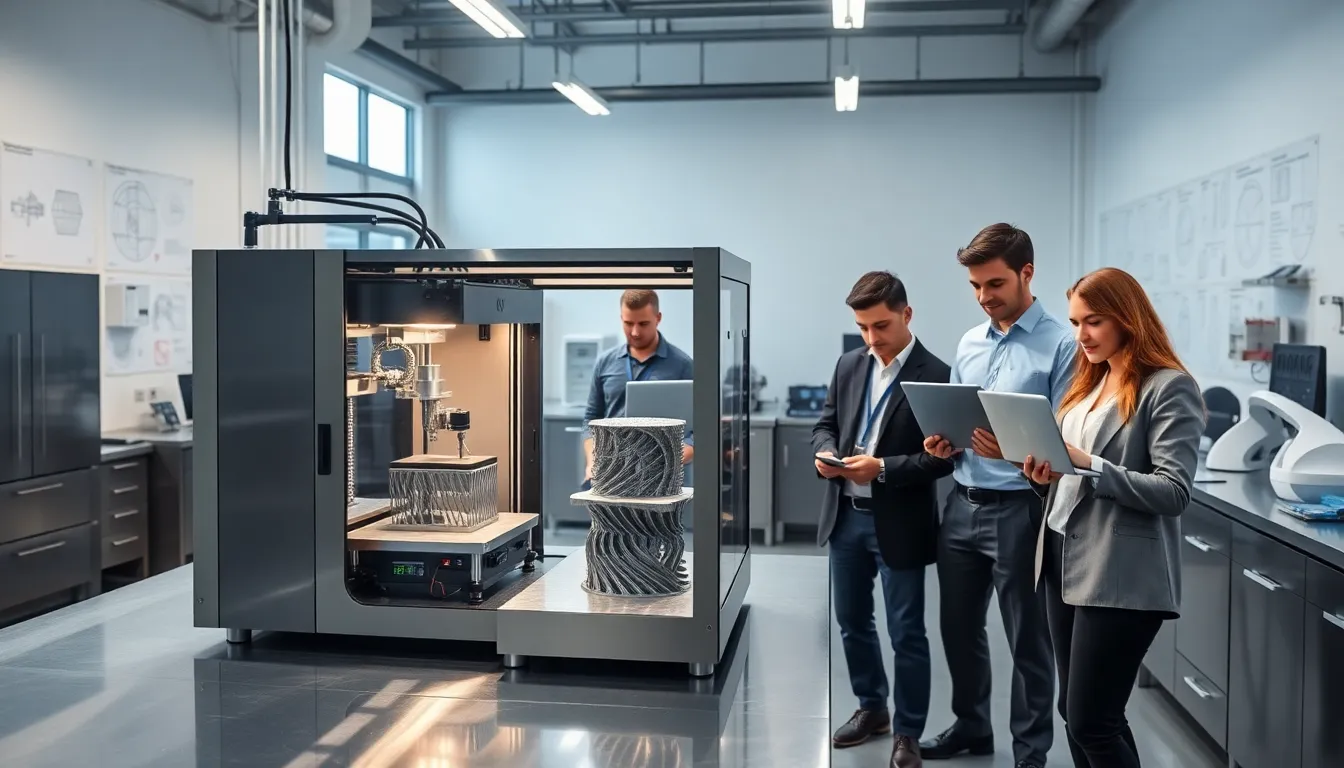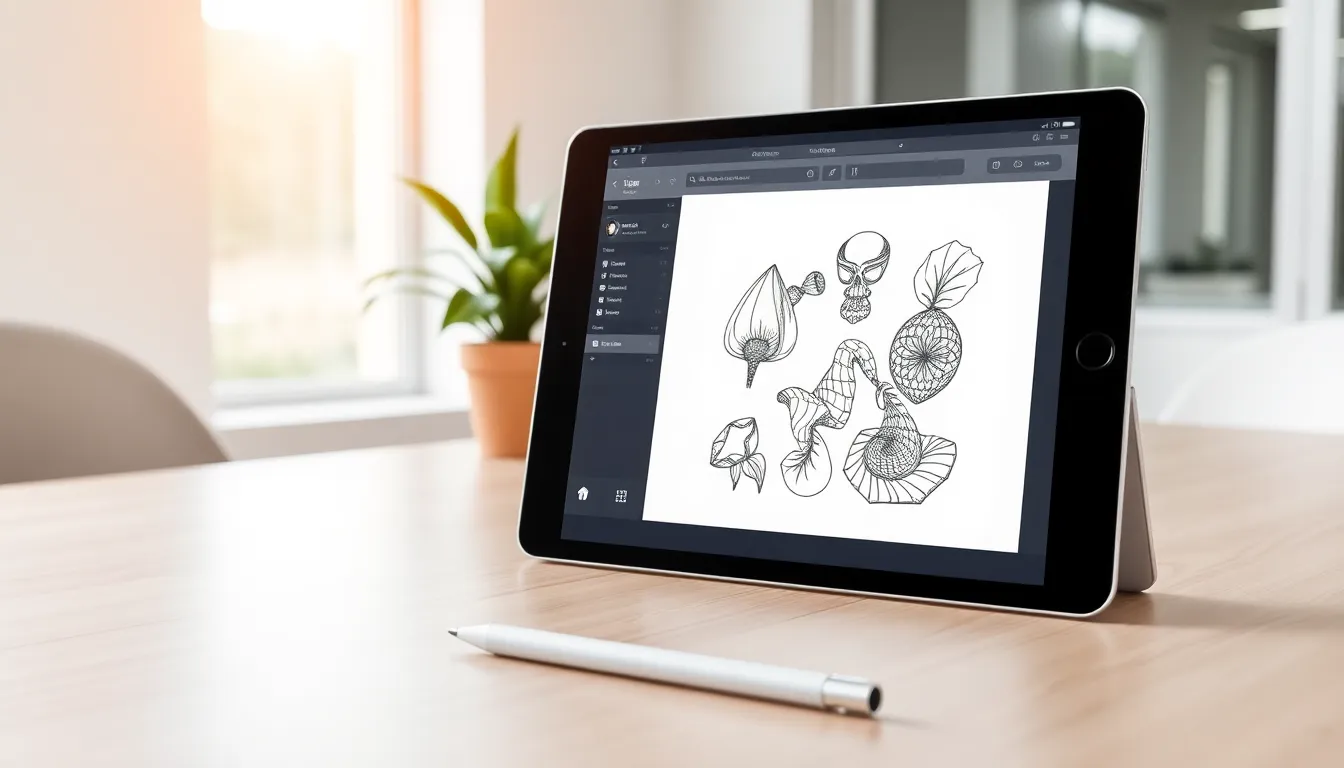Imagine a world where custom parts are created on-demand, where an engine component can be manufactured overnight, and where metal objects are widely accessible without extensive lead times. Welcome to the fascinating realm of stainless steel 3D printing. This innovative technology is not just transforming how products are made: it’s revolutionizing the entire manufacturing landscape. In this text, we’ll explore the ins and outs of stainless steel in 3D printing, uncovering the benefits, processes, applications, challenges, and future trends. So buckle up, because the journey into the exciting future of manufacturing is about to begin.
Table of Contents
ToggleUnderstanding Stainless Steel in 3D Printing

Stainless steel is a popular material choice in manufacturing, known for its durability, corrosion resistance, and aesthetic appeal. In the realm of 3D printing, it offers exciting potential due to its mechanical properties. Unlike traditional manufacturing techniques, which often require extensive machining and shaping, stainless steel 3D printing allows for more complex geometries and intricate designs that would otherwise be challenging to produce.
This technology utilizes powdered metal that is fused together layer by layer. The most commonly used methods include Selective Laser Melting (SLM) and Direct Metal Laser Sintering (DMLS). These processes not only help achieve high precision but also minimize waste, reinforcing the sustainability of stainless steel manufacturing. Also, advancements in alloy formulations are paving the way for even greater strength and performance in printed objects, making stainless steel an attractive option across various industries.
Benefits of Using Stainless Steel in 3D Printing
When it comes to stainless steel 3D printing, the advantages are manifold. First and foremost, durability is a standout feature. Parts created through this process are robust and resistant to wear, making them suitable for demanding environments.
Next up is the design freedom it offers. Traditional manufacturing often limits creativity due to constraints associated with tooling and molds. But, with 3D printing, manufacturers can design components with complex internal structures, optimizing them for both performance and weight.
Another significant perk is the speed of production. Rapid prototyping allows companies to bring products to market faster. Whether it’s a prototype or a one-off part, the often-short lead times create a competitive edge. Cost-efficiency is also notable. While initial investment in 3D printing technology can be substantial, the reduction in material waste and the ability to print on demand can lead to significant savings in the long run.
The 3D Printing Process for Stainless Steel
The stainless steel 3D printing process is both fascinating and intricate. It typically begins with designing a digital model using CAD software. Once the design is finalized, it’s sliced into layers, preparing it for printing.
In Selective Laser Melting, a thin layer of stainless steel powder is spread across the build platform. A laser then fuses the particles together, creating the first layer. After each layer is completed, the platform descends slightly, and the process repeats until the object is fully formed. Post-processing may involve cleaning, heat treatment, or machining to achieve the desired finish and dimensional accuracy.
This meticulous method delivers not just exceptional precision but also enhances the material properties of the printed parts. Each layer bonds tightly, leading to a density comparable to traditionally manufactured stainless steel.
Applications of Stainless Steel 3D Printing
The applications of stainless steel 3D printing are as diverse as they are exciting. One major area is aerospace, where components must withstand extreme conditions. Parts produced through this technology can lead to lighter, more fuel-efficient aircraft.
In the medical field, stainless steel 3D printing is making waves. Customized implants and surgical tools that fit patients perfectly are now possible, improving outcomes and patient comfort. The automotive industry is not far behind. From prototyping to full-scale production, manufacturers are leveraging this technology to innovate faster than ever.
Also, the engineering and architecture sectors are seeing benefits as well. Building intricate architectural features or parts for machinery can now be done more efficiently, enhancing both aesthetics and functionality. With each advancement, the range of possibilities continues to expand.
Challenges and Considerations in Stainless Steel 3D Printing
Even though the numerous advantages, stainless steel 3D printing is not without its challenges. One significant obstacle is the cost of materials. High-quality stainless steel powder can be expensive, and the investment in printers capable of using this material can be steep.
Also, the printing process itself requires highly skilled operators. Understanding the nuances of laser settings, material behavior, and post-processing is crucial for achieving optimal results. This technical expertise can be a barrier to entry for some companies.
Also, achieving isotropic properties, that is, uniform properties in all directions, can sometimes be problematic. Variability in printed parts may affect their performance in specific applications. Continuous research and development are necessary to address these issues and enhance the reliability of printed components.
Future Trends in Stainless Steel 3D Printing
The future of stainless steel 3D printing looks promising, with several trends emerging. One exciting development is the rise of hybrid manufacturing techniques that combine additive and subtractive processes. This synergy can optimize production by utilizing the strengths of both methods.
Also, advancements in material science are likely to lead to new stainless steel alloys designed specifically for 3D printing. Such materials could offer enhanced performance characteristics, further expanding the applications of this innovative technology.
As more industries adopt 3D printing, expect to see increased automation and integration with artificial intelligence. These technologies will optimize production rates and quality control, making stainless steel 3D printing an even more viable option for high-volume manufacturing.






